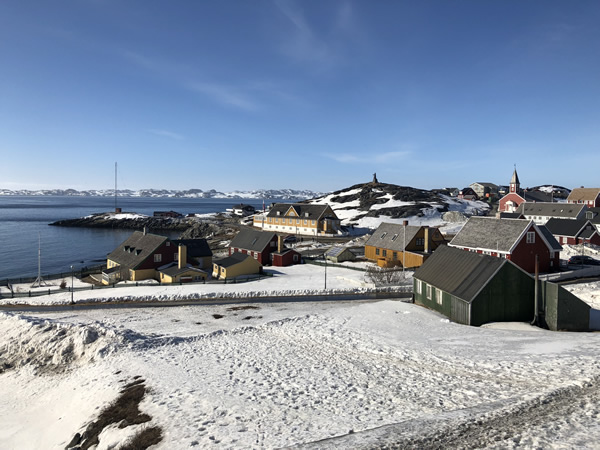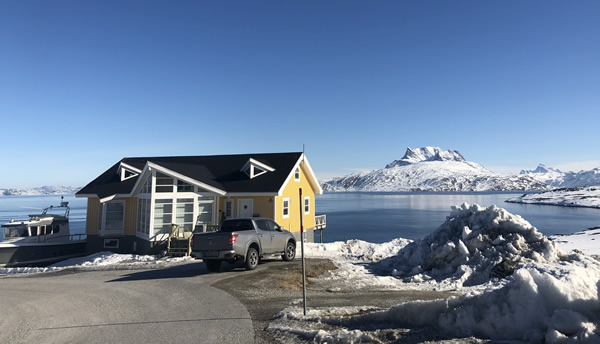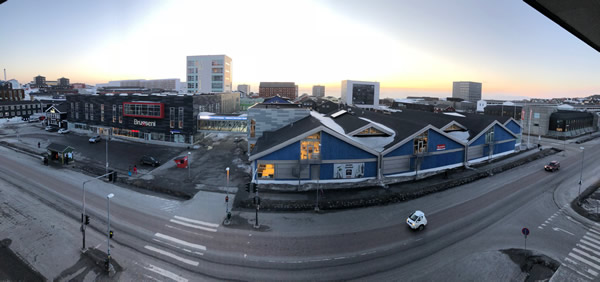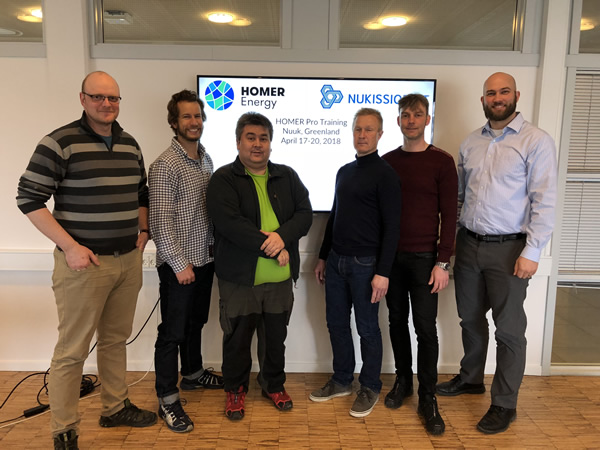
Islands have been among the earliest adopters of renewable energy and microgrid technology because of the imperative to reduce the economic impact of expensive fuel imports. But, we often equate island leaders in distributed energy with sunny tropical communities such as Hawaii, which has become the US leader in the adoption of solar energy, the Caribbean countries, or the diverse island nations of the Pacific. It’s easy to forget that northern islands are wrestling with similar mandates to use green energy and face even greater challenges such as producing enough energy for heating, on top of the same electrical demands that all communities encounter. One such example is Greenland, which happens to be the world’s biggest island.
In response to these challenges the government of Greenland is embarking on an ambitious plan to modernize its energy systems. A key part of that plan is to increase generation from renewable resources such as wind, solar and smaller-scale hydro. Greenland’s official goal is that “renewable energy sources shall cover the country’s public energy supply as much as possible by 2030.” Additionally, the government wants to reform Greenland’s heating methods by building more renewably-powered community heating systems. District heating would replace individual or private boilers that, in many towns, still burn fuel oil.

HOMER Energy is helping to support Greenland in its energy transition. John Glassmire, Director of Energy Engineering at HOMER Energy, recently traveled to Greenland to train engineers from Nukissiorfiit, the country’s utility. Nukissiorfiit (“where energies are created” in the Greenlandic language) engineers are using HOMER Pro to assess options for using renewables and storage to reduce the near-100% reliance on diesel for energy in the small, remote villages around Greenland.
Almost 80% of Greenland’s surface is covered with ice. And, all of the country’s 56,000 inhabitants — 80% of them of Inuit heritage – live along the coastline in villages where subsistence hunting and fishing is the main industry. Currently, most of these remote settlements are powered by expensive, imported diesel fuel used in central power plants. Meanwhile the main city, Nuuk, and some of the larger coastal towns, have ample hydropower resources that have allowed them to develop district heating systems and other amenities not shared by the remote villages.
We spoke with John Glassmire about his trip to this fascinating country, and the role that HOMER Pro will play in helping the government meet its new environmental goals:
Q: What is the Greenland government aiming to do with these energy reforms?
A: They are hoping to achieve a number of related goals with their ambitious new energy plan. The top priority is to reduce energy costs for everyone by getting the island off of expensive, imported diesel for their energy needs. Secondly, there has been tension around the fact that remote villages have been paying more for energy than the residents in the capital city of Nuuk. The largest city in Greenland, Nuuk is a hub not only for governance, but also for jobs and economic opportunities. While I was there, there was a push to make the quality of life more equitable between the 50-60 smaller communities around Greenland and the “big city”. To promote this goal, the government recently decided that electricity prices will be both lower and equal in all electrical grids across the country.

Greenland hopes to cut its energy costs overall by investing even more in renewables. Many of the larger towns are already powered by hydropower which, at a national level, makes the overall electricity mix appear to be based heavily on renewables. Most of the smaller towns and settlements, however, have been stuck on diesel power. Nukissiorfiit recognizes that the two-pronged effort to increase the use of renewables and lower energy costs for Greenland means revolutionizing the energy systems in these remote communities, and reducing fossil fuel consumption heavily.
Q: Tell us more about that. What is their plan?
A: They’re trying to provide the highest quality power, with the greatest use of renewables, at the lowest cost possible for everyone on the island, whether in the main city or in a small settlement. There are tradeoffs between these goals, so we’re helping them analyze those tradeoffs. And in fact that’s exactly what HOMER Pro is designed to do – to help users get insights into the complexities of hybrid power and design cost-effective and reliable systems. Greenland has important hydro resources, but hydro tends to be more appropriate for large-scale use. The majority of the settlements around Greenland are tiny. Nuuk is home to about a third of the population, and that’s still only 17,000 people! So, Nuuk and the other relatively large towns benefit from hydro, but the government is exploring other options for the smaller towns. Options might include wind, solar, and combined heat and power (CHP). They are looking at ways to use renewables and CHP to supply district heat, whether from the waste heat or surplus renewable electricity. They’re also looking at ways to use small-scale hydro in these communities.
Q: Tell us a little about Greenland itself, and its energy needs.
A: Well it’s a fascinating place. The Inuit culture – with its traditions of hunting and fishing, self-sufficiency and survival under harsh conditions – is something that the people want to preserve. They don’t want everyone migrating to the cities, which is a trend all over the world. One challenge is that the places where you can get a technical education are in the towns, which is just one of many things that encourages rural to urban flow.
I was there during the election, and it was clear that despite these trends, the rural areas have outsized political impact. One of the objectives of Greenland in terms of energy is to provide clean energy for jobs in the smaller towns; primarily this is electricity for fish processing, but they are exploring other industries for the future – data centers, for example. To understand the politics, it’s also important to mention that Greenland is an autonomous Danish territory, which means that although it’s locally governed there is still significant Danish funding, Danish defense, and Danish cultural influence. The district heating focus is a Scandinavian tradition. The Danes have a long history with district heating, so that’s probably one reason that expanding district heating is an important objective of Greenland’s energy plan.
Q: Tell us a little bit more about district heating.
A: District heating is much more popular in Europe, especially Scandinavia, than in the US. Instead of individual heaters in each building, you have one large boiler and then steam or superheated water is piped to nearby buildings. Although the piping is expensive, this can be very cost-effective when using waste heat or excess renewable electricity.
Q: You mentioned that you noticed a (relatively) extraordinary number of electric vehicles in Nuuk. Can you tell us about that?
A: Yes! EV’s were everywhere in Nuuk. It might be one of the highest per capita concentrations of EV’s in the world. Considering that Greenland is an island that relies on imported oil, and in Nuuk they have plentiful hydro electricity, perhaps it perhaps shouldn’t be that surprising. I read that in 2013 there were 6 EVs. In 2016 there were 191. I know the government is planning to increase charging stations and reduce import taxes on EVs to encourage people to buy them. And, they are hoping to use their supplies of renewable electricity to charge these cars.

Q: How are things going to change for small, remote communities through this new government energy plan and how does HOMER Pro fit into those objectives?
A: Generally these communities are likely to have independent microgrids, and that was one of the most important goals of my visit – to teach the utility representatives how to model these microgrids using HOMER Pro. Because, while all these remote communities are united by a common culture and they face common challenges, they differ significantly in terms of their energy needs and the resources available. So that means each community needs a different microgrid design, and different systems will be required.

Q: Thanks John!
From the arctic to the tropics, HOMER Energy has visited dozens of countries to help more communities incorporate renewable energy into their generation mix. We’ve conducted training sessions in the following places…and probably more!
Fiji, Bolivia, Nigeria, Kenya, Federated States of Micronesia, Cuba, Myanmar, Colombia, Belize, Mexico, Spain, Indonesia,, Somaliland, Lebanon, Philippines, UK, Spain, Canada, Haiti, Antigua and Barbuda, St. Kitts and Nevis, Dominica, and St. Lucia. In the United States we’ve hosted trainings in New York, Denver, Fairbanks, Puerto Rico, New Jersey, Minnesota, Texas, Washington State, Indiana, California, and Washington, DC.
If you’re interested in learning about how HOMER Energy can help your community plan a more renewable future, please do not hesitate to contact us. We would be happy to come conduct a training for you.
 You can download and try the full-featured version of HOMER Pro from our Products page. You can also try our simpler, free online “Quick” version, built from HOMER Saas API – HOMER Quickstart. The Quick modeling option is simplified, but you will get useful reports that provide a good overview of the capabilities of HOMER Pro.
You can download and try the full-featured version of HOMER Pro from our Products page. You can also try our simpler, free online “Quick” version, built from HOMER Saas API – HOMER Quickstart. The Quick modeling option is simplified, but you will get useful reports that provide a good overview of the capabilities of HOMER Pro.
